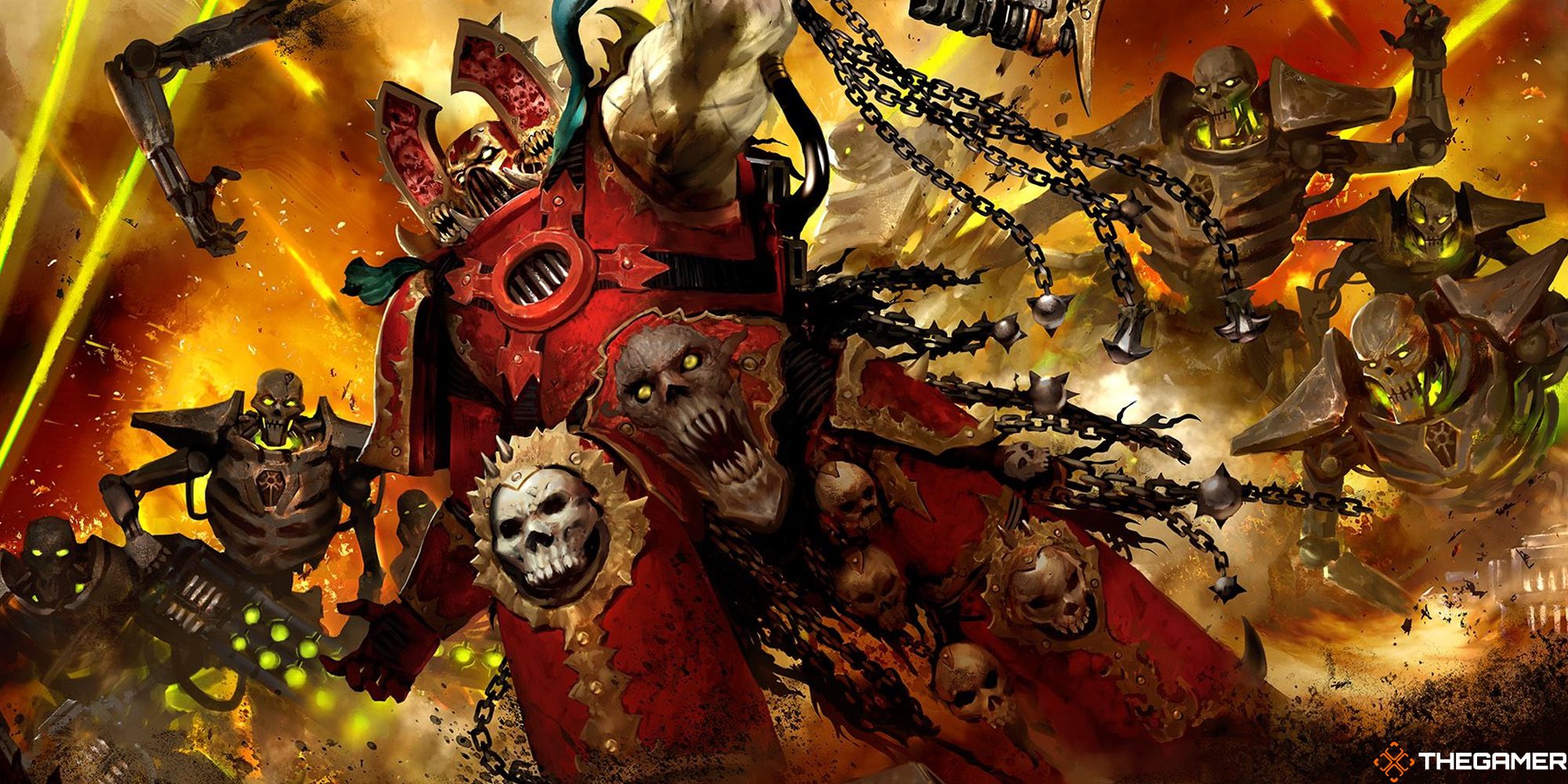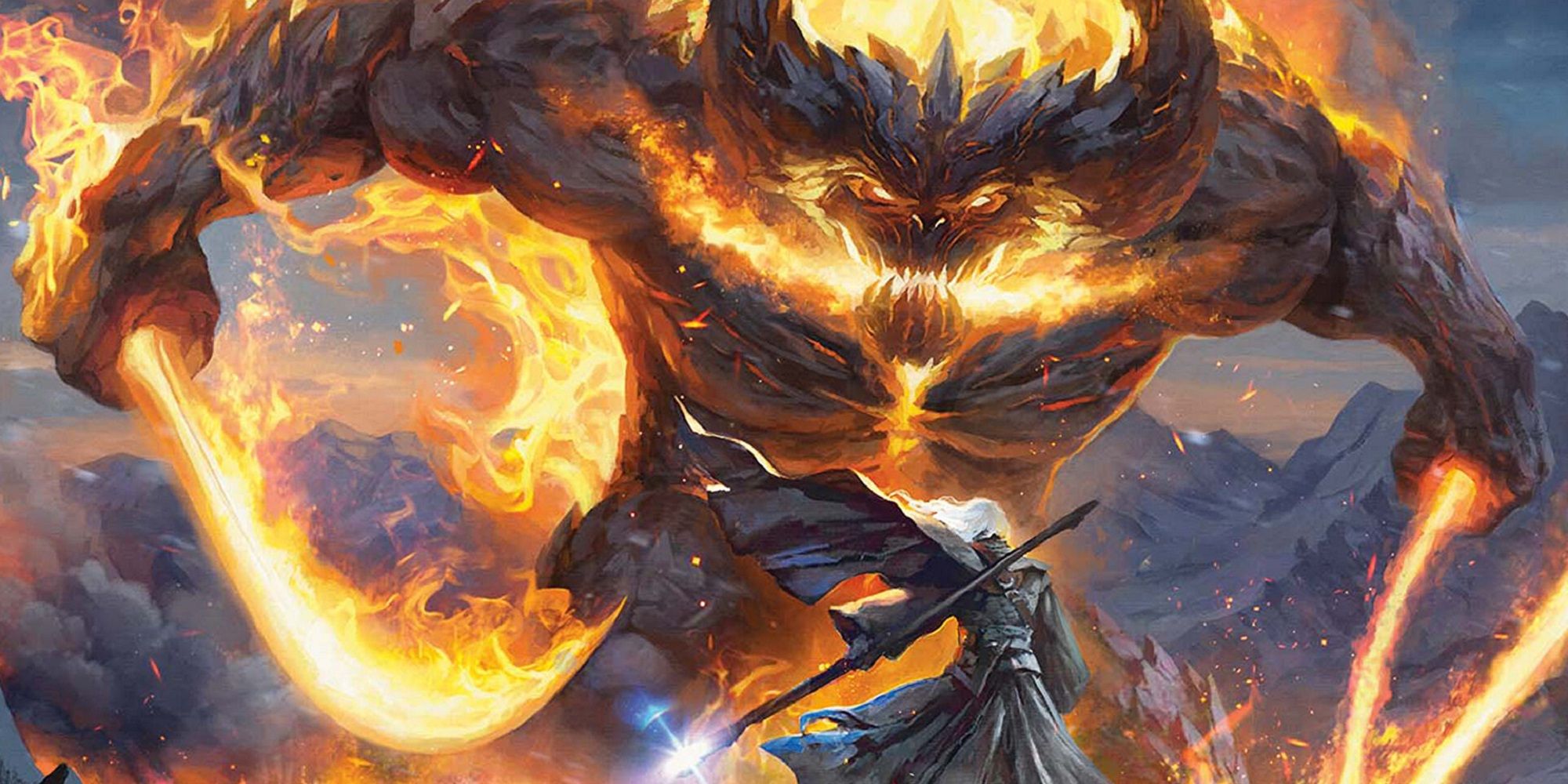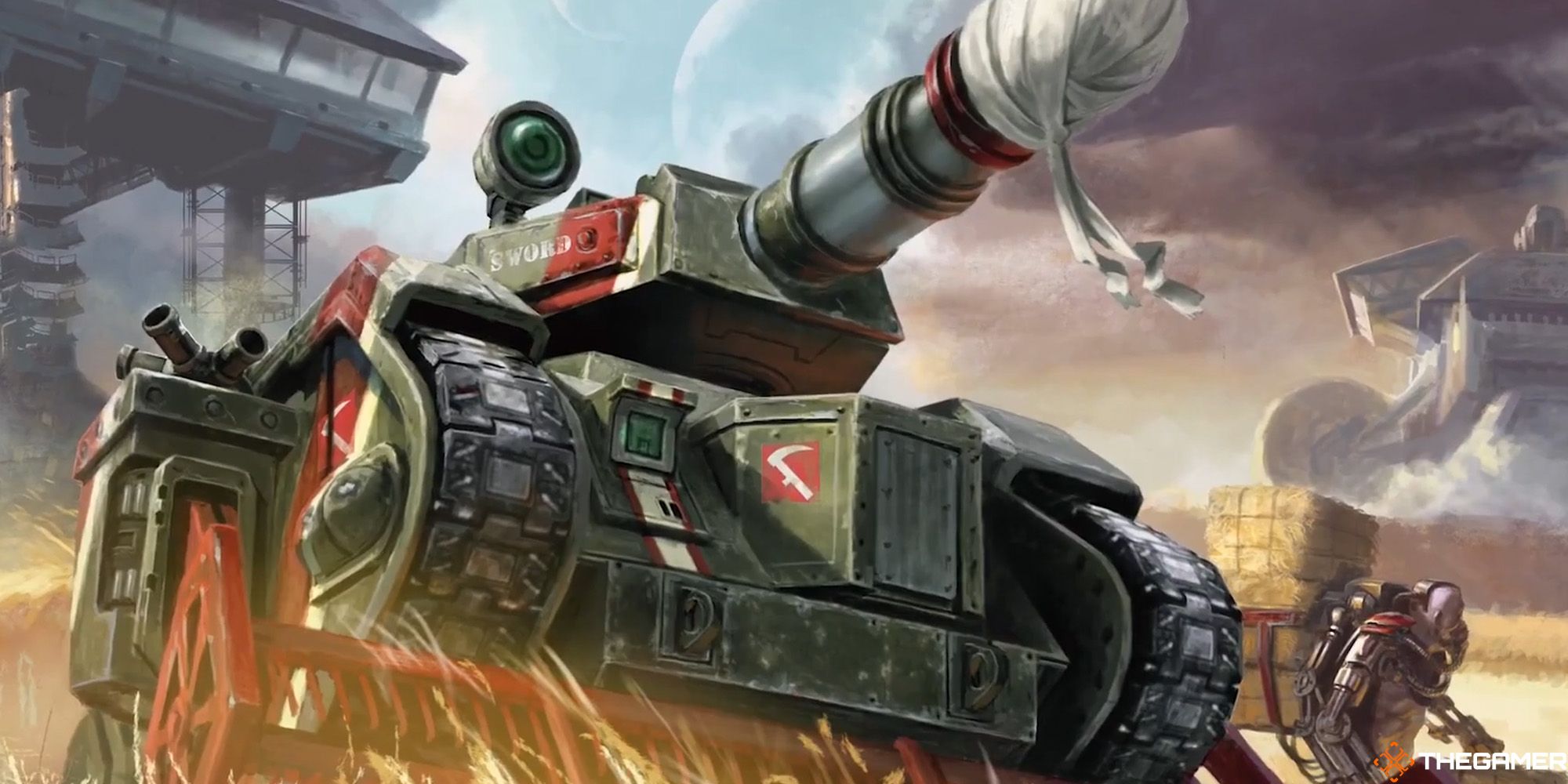I’m going to come right out and say it: I don’t play Magic. I barely know what it is, despite the fact that I once bought a starter set when I was an impressionable student. I know there’s mana, I know there are different colours, but I don’t know what they mean.
One thing I do know about Magic: The Gathering, though, is that our very own MTG specialist, Joe Parlock, drops excellent art into TheGamer Slack every so often. I don’t understand what I’m looking at most of the time, but I know it looks great. Compare it to the Pokemon TCG, which I play more often and actively collect, and the art is on another level, generally speaking.
That’s why I got excited for Magic’s forthcoming crossovers. I’m a Warhammer nut in the Golden Age of Warhammer video games, and I couldn’t wait for some cards to add some more spice to the universe so many of us know and love. That’s love in the sense that it’s really rich and vivid, not love in the sense that I admire Roboute Gulliman and the space fascists. The Lord of the Rings cards (from a forthcoming crossover coming next year) I saw in a preview looked great – unlike The Rings of Power, Peter Jackson, or even Alan Lee in their scope and design. I like Tolkien more than I like Warhammer, but I was still excited to see some artists apply this imagination and creativity to the ideas of the 41st Millennium.
Never have I been so disappointed. Around half of the cards use existing Warhammer 40k art, which, while cool, we’ve all seen before. It’s not only the same style, the same characters, and the same artists that Warhammer fans see every time they open a Codex or turn on a video game, it’s the exact same pictures that feature in Codexes and rulebooks.
The bespoke art isn’t a lot better, I’m afraid to say. Khârn the Betrayer is in the midst of battle, surrounded by Necrons grabbing for him as his axe swings, lopping off metal arms, as explosions fill the background. It’s cool, but I’ve seen it before. Open the Chaos Space Marine Codex and practically all of the artwork will look similar, even if this is technically new. I mean no disrespect to the artists when I say this, Kekai Kotaki has done a great job, but this was a chance for Magic to really push the boat out and do something different with Games Workshop’s deep universe.
It seems like Games Workshop is being too protective of its IP. It doesn’t want Magic to take any risks with its precious Space Marines or Tyranids for some reason, when I can only see creative interpretations as being a positive. Tyranids are based closely on the xenomorph from Alien – the excellent Space Hulk board game doubles down on that inspiration – so why not let artists explore that aspect of them, rather than the usual spine chewing, battlefield slashing beasties that we see time and time again? My only guess is that Games Workshop doesn’t want to disappoint Magic players drawn in by creative interpretations of its universe, only for them to be unimpressed by the actual artwork in its books, but that reading seems a little uncharitable.
The Mechanicus is my favourite Warhammer faction, their loyalty to the Emperor swayed slightly by their praise for the Omnissiah and all things machines. They’re corrupted humans, replacing flesh with robotics at every turn in order to become better. The body horror is downplayed in the Warhammer game, but plays a big part in novelisations like the Priests of Mars trilogy by Graham McNeill. If Magic had only taken more inspiration from the novels than the rulebooks, the interpretations could have been so much more varied and interesting. I don’t mind the Fabricate art by Johan Grenier, but again it looks like any art from the Adeptus Mechanicus Codex, rather than something original and creative. I’m told on good authority that the mainline Magic: The Gathering sets are currently doing Phyrexians, which have “that exact flavour of biomechanical body horror.” Thanks, Mr. Parlock.
The one exception is Swords to Plowshares, which I believe is an existing Magic card that has had Warhammer art added to it for this crossover. This is probably to make the set actually, you know, playable, rather than just summoning hand after hand of demons like you do in the tabletop game. But the art is clever. It shows a Leman Russ tank with the barrel of its mighty Battle Cannon covered with cloth, and a header (you know, the spinny front bit from a combine harvester) has replaced the sponson-mounted Lascannons. It’s harvesting hay, and a Servitor collects the bales alongside it.
This one card gives more of an insight into life in the Imperium than any battle scene or axe-wielding character. This is the kind of artwork that, back when I had more time and disposable income (thanks, student loans), I would have carefully converted an army around. Weapons and tanks converted to ploughs and agricultural equipment, which I would then convert back into being an army. It’s stuff like this that gives the 41st millennium flavour and personality, and makes it feel like a universe lived in, rather than just a blank galaxy built to host climatic battles and eternal wars. Some of the other landscape cards (think Mountain and Swamp) have similarly cool elements of worldbuilding, but Swords to Plowshares stood out in particular.
To take it back to The Lord of the Rings (again, Ben? Really?), Magic's Gandalf looks nothing like Ian McKellen. Its Balrog doesn’t look like Peter Jackson’s, nor Alan Lee’s, nor John Howe’s. They’re new, imaginative interpretations of Tolkien’s words. And I think that’s a part of the problem. Games Workshop has entered this crossover to sell toy soldiers, and therefore it wants the artwork to look exactly like its toy soldiers. Sure, you can paint them whatever colour you want, but if you go into a shop holding the Be’lakor, the Dark Master card, you’ll easily be able to match the artwork to the £90 box of plastic on the shelf. Once again, capitalism has triumphed over creativity, and this set is worse off for it.



.jpg)
